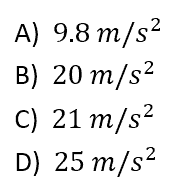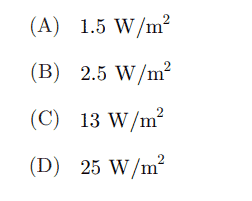I get so many questions about whether or not a master’s degree or a PhD from an EAC or ABET-accredited curriculum count as experience toward licensure, and in this article (and video above), I explain this to you by reviewing a study that was done by Michaela Martin, PE from Oak Ridge National Laboratory and Kurt Stafford from the University of Tennessee, to help clarify if you can use these types of education towards your qualifying licensure experience. They did wonderful research on this subject.
FE Exam Prep: Distance A Golf Ball Travels
In this article, (and video above), we determine the distance a golf ball travels. A question on this topic would typically be found in the Dynamics section of the FE Exam and therefore will give you a better understanding of what you can expect during the exam. This week’s problem was created and solved by Enrique Ivers, an Engineer in Training.
Question:
A golfer on level ground attempts to drive a golf ball across a 900 ft. wide pond, hitting the ball so that it travels initially at 200ft./s. The ball travels at an initial angle of 45° to the horizontal plane. How far will the golf ball travel, and does it clear the pond?
Solution:
[Read more…] about FE Exam Prep: Distance A Golf Ball Travels
The PE Exam: How to Write Your Professional Experience
I get so many questions from listeners asking for advice on how to write their professional experience in an acceptable manner when applying to sit for the PE exam, therefore in this article, I will provide you with some general guidelines on how you can write your professional experience history in a way that is acceptable to the your licensing state board to help you qualify for licensure.
[Read more…] about The PE Exam: How to Write Your Professional Experience
Calculating the Maximum Compression of a Loaded Spring: FE Exam Review
In this article, (and video above), we calculate the compression of a loaded spring to give you a better understanding of what you can expect during the exam. This week’s problem was created and solved by Enrique Ivers, an Engineer in Training.
Question:
A disk with a mass of 1kg, a diameter of 10cm, and a width of 5cm is placed on the edge at the top of an inclined ramp 1m high. The ramp is inclined at 15°. At the bottom of the ramp is a spring whose spring constant is 2,000 N/m. The disk rolls down the ramp and compresses the spring while coming to a complete stop. What is the maximum compression of the loaded spring?
Solution:
[Read more…] about Calculating the Maximum Compression of a Loaded Spring: FE Exam Review
Is The Water Resources & Environmental Civil PE Exam Worth Taking?
In our previous four episodes in this series, I discussed four of the depth areas that you can take for your Civil PE Exam: geotechnical, construction, structural, as well as the transportation depth area, and in this article, (and video above), I review-in detail the Civil: Water Resources & Environmental depth portion of the PE Exam to help you decide if this might be the right option for you. You can find links to the first four videos in this series below.
The Five Different Areas That You Can Choose From When Taking the PE Civil Exam Are:
- PE Civil: Geotechnical
- PE Civil: Construction
- PE Civil: Structural
- PE Civil: Transportation
- PE Civil: Water Resources & Environmental
Remember that the PE Water Resources & Environmental exam is a breadth and depth examination. The breadth items (typically known as the morning section) cover topics from all areas of civil engineering. However, the depth items (also known as the afternoon section) focus more closely on a single area of practice, like structural engineering.
What Is Water Resources & Environmental Engineering?
[Read more…] about Is The Water Resources & Environmental Civil PE Exam Worth Taking?
Calculating the Velocity of a Falling Ball | FE Exam Prep
In this article, (and video above), we calculate the velocity of a falling ball. A question on this topic would typically be found in the Dynamics section of the FE Exam and therefore will give you a better understanding of what you can expect during the exam. This week’s problem was created and solved by Enrique Ivers, an Engineer in Training.
Question:
The velocity (in m/s) of a falling ball is described by the equation:
What is the acceleration at time t=2s?
Solution:
[Read more…] about Calculating the Velocity of a Falling Ball | FE Exam Prep
PE Civil Exam Depth: Transportation
In our previous three videos, I discussed three of the PE depth areas that you can take for your Civil PE Exam, geotechnical, construction, and structural, and in this week’s article, (and video above) I review in detail the transportation depth portion of the Civil PE Exam to help you decide if this might be the right option for you. You can find links to the first three videos below.
The Five Different Areas That You Can Choose From When Taking the PE Civil Exam Are:
- PE Civil: Geotechnical
- PE Civil: Construction
- PE Civil: Structural
- PE Civil: Transportation
- PE Civil: Water Resources & Environmental
Remember that the PE Civil Structural exam is a breadth and depth examination. The breadth items (typically known as the morning section) cover topics from all areas of civil engineering. However, the depth items (also known as the afternoon section) focus more closely on a single area of practice, like structural engineering.
What Is Transportation Engineering?
FE Mechanical Exam Review: Calculating Heat Transfer Through A Concrete Wall
In this article, (and video above), we’re going to calculate the heat transfer through a concrete wall. This question forms part of the Mechanical section of the FE Exam and will give you a better understanding of what you can expect during the exam. This week’s problem was solved by Enrique Ivers, an Engineer in Training.
Question:
A concrete wall is 20 cm thick and has an overall thermal resistance of 0.2 m2 ·°C/W. The temperature difference between the two wall surfaces is 5°C. What is most nearly the heat transfer through the wall?
Solution:
[Read more…] about FE Mechanical Exam Review: Calculating Heat Transfer Through A Concrete Wall
PE Civil Exam Depth: Structural
In our previous two videos, I discussed two of the depth areas that you can take for your PE Exam, Geotechnical and Construction, and in this article (and video above), I review, in detail, the structural depth portion of the Civil PE Exam to help you decide if this might be the right option for you.
The Five Different Areas That You Can Choose From When Taking the PE Civil Exam Are:
- PE Civil: Geotechnical
- PE Civil: Construction
- PE Civil: Structural
- PE Civil: Transportation
- PE Civil: Water Resources & Environmental
Remember that the PE Civil Structural exam is a breadth and depth examination. The breadth items (typically known as the morning section) cover topics from all areas of civil engineering. However, the depth items (also known as the afternoon section) focus more closely on a single area of practice, like structural engineering.
Please note that the PE Civil: Structural exam is not the same as the SE (Structural Engineering) exam. The PE Civil: Structural exam is to obtain your Professional Engineering license, while the SE Exam is one you would take to obtain your structural engineering license.
What Is Structural Engineering?
5 Tips & Tricks to Pass the FE Exam in 2 Months
In this article (and video above), I talk with Alejandro Patino, EIT, Senior Engineer at Colliers Engineering & Design, who gives us five specific tips on how he prepared, studied, and passed the FE exam with two months of focused study time.
Here Are Some of the Questions I Ask Alejandro:
- Talk to us about your first tip which is about creating an exam schedule?
- What process did you use to prepare for the FE exam?
- What advice can you share with the listeners when doing practice problems?
- How did you time yourself during the exam and why do you think this was the reason you failed the exam the first time?
- What final tip would you like to share with the listeners?
Here Are Some of the Key Points Discussed in This Episode:
[Read more…] about 5 Tips & Tricks to Pass the FE Exam in 2 Months




